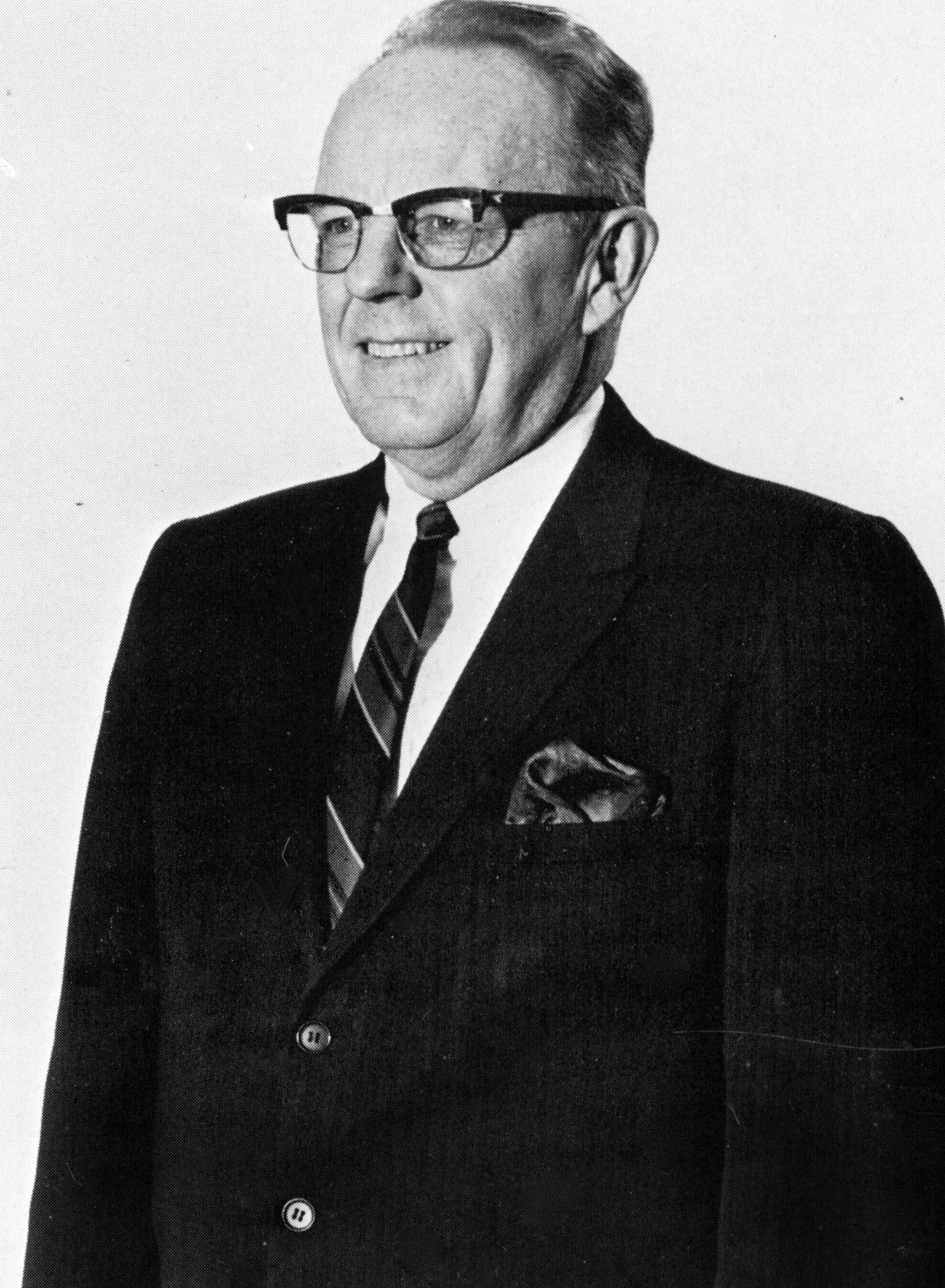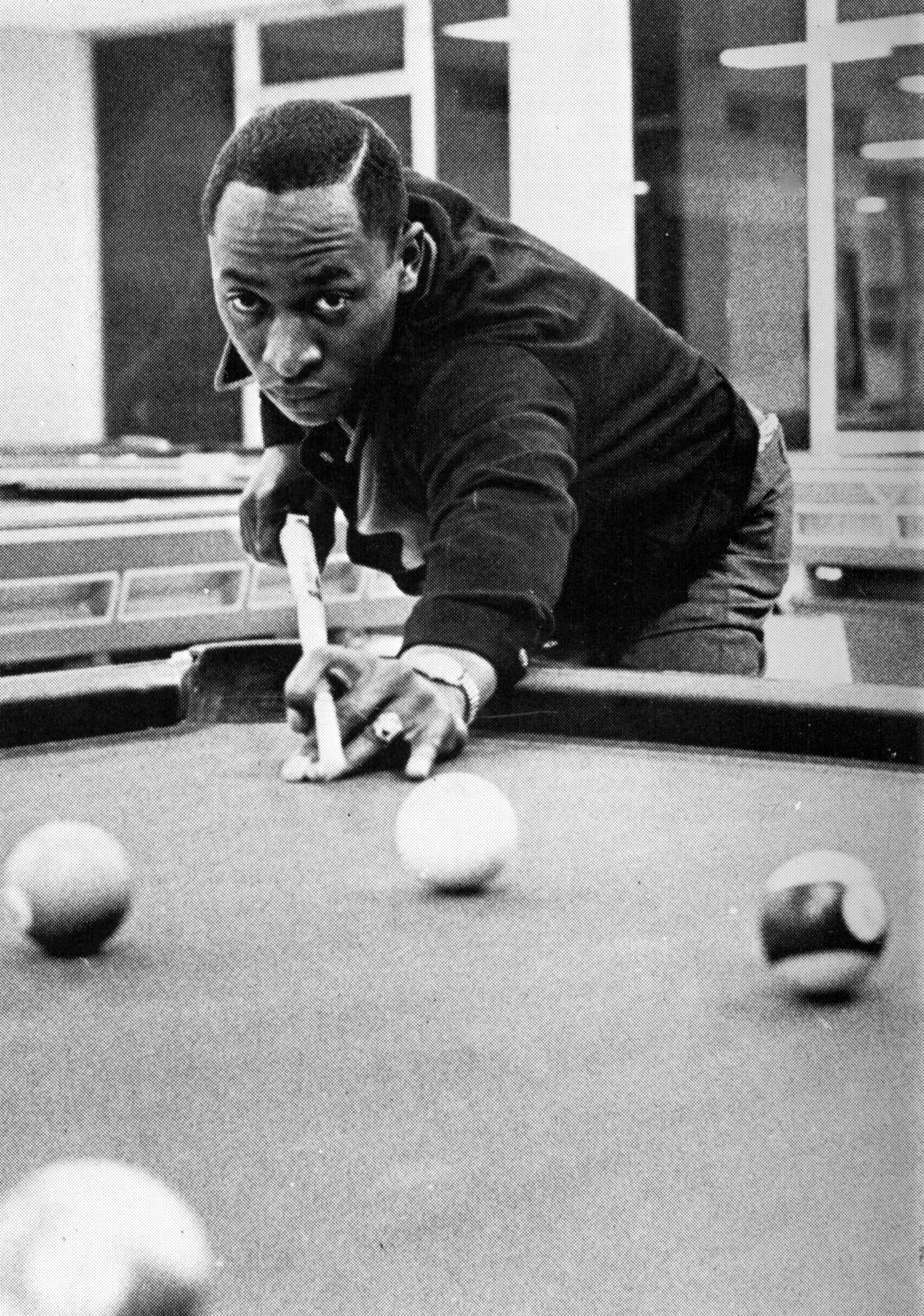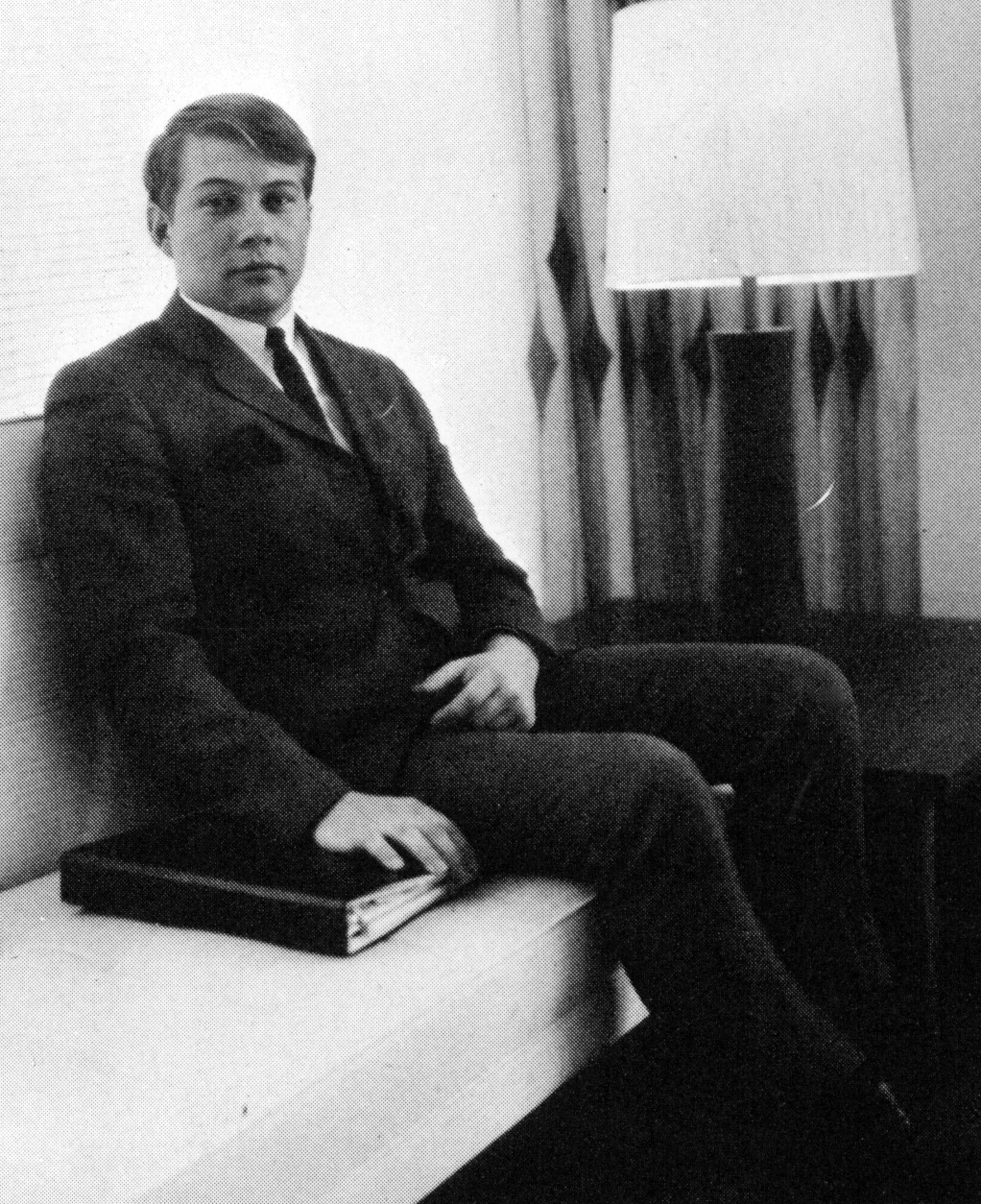Sit-in in Dean Niemi’s Office
c. 1969-1970
After the basketball game sit-in, racial tensions at Northern and in Marquette grew. McClellan explained some of the events which created the atmosphere which led to another sit-in in December of 1969:
There was an incident over on Ridge Street…a black basketball player…he was shot at. Some altercation, I’m not sure. I think he pulled into the guy’s driveway to turn around and he pulled up quite a ways in the driveway and apparently—I’m not sure because I wasn’t there—but apparently the guy ran out of the house and said something to him and the black guy said something back and then the guy went back and got his gun and ran out of the house and came out and the guy in the car was frightened to death and got out of there as the fellow was running out with his gun…black people were quite alarmed by this incident. They did not feel safe going into the older parts of Marquette. They would never feel safe driving around some of the better subdivisions and on the east side and so on because there weren’t any black people over there so they stuck out like a sore thumb. And they used to have to be very careful, I remember they used to tell me that they never understood the guns. We understand them as hunting, but they didn’t. They didn’t understand all these rifles which guys would bring onto campus and then they didn’t have the check-in system that we have now. So they could keep them in their rooms unloaded or they could keep them in a central room locked but they were in the dormitories, they weren’t over in…security. So the black guys saw a lot of guns and a lot of white guys and as I said there were some shots fired. So there was a mood of considerable tension….
(Question: Were shots actually fired [on campus]?) I didn’t witness it and I don’t like to exaggerate because I think it weakens the truth of what I know to be true. So as far as the shots fired against Pat Williams, the guys alleged it. The police investigated and said that was not true, but the black guys said it was true. And the fellow who was supposedly shot at, Pat Williams, was an older guy, very serious, and not the sort to cause a lot of commotion for nothing. But factually I have no way to tell one way or the other. I can’t testify to that one.
However, the sit-in primarily occurred due to an incident involving an African-American student named Charles Griffis. According to oral history interviews, Griffis, an African American, had begun dating the former girlfriend of an RA, who was white. The RA, who was upset about this, looked for a way to get back at Griffis. When someone reported that Griffis had a girl in his room, which was not allowed, the RA went to Griffis’ room and reportedly “saw a young lady standing in the closet.” Griffis and the RA talked for a few minutes outside the room and re-entered. This time, the RA saw the girl “on the floor next to the heater.” At this point, Griffis admitted that there was a girl in his room. The RA then inexplicably went to his room to get cigarettes, and by the time he had returned “the girl had run down the stairway and gotten away.”
Griffis was brought before the student judiciary for the infraction and was suspended, a much harsher penalty than a white student had received for a similar infraction just a few weeks before. After the trial, he went to a meeting of the Human Rights Commission, a student and faculty group whose task was to examine university decisions for possible discrimination, and told them that he felt he had been treated unfairly. The Human Rights Commission then wrote to Jamrich asking him to overturn the decision. They noted that the RA had searched Griffis’ room on the basis of an anonymous phone call and that those judging the trial had assumed Griffis guilty and tried him on the basis of how much punishment he should receive. They charged that there was “apparent hostility” on the part of the jury towards Griffis. According to an oral history interview with McClellan, this unnamed “apparent hostility” was that “one of the white administrators on the campus threatened quote to punch Griffis out if he ever showed his face here again end quote.” Although there was a tape of the judiciary hearing, it was erased by Jamrich. Although the truth of what was said at the trial remains unclear, it seems apparent that something on the tape was incriminating enough that the administration wished to get rid of it.
In response to receiving the HRC’s suggestions and the tape of the trial, Jamrich asked the Student-Faculty Judiciary, the next step of the internal student justice system, to begin the appeal trial of Griffis right away. The HRC also began to look into possible bias in student representation on the student judiciary.
Word spread quickly of Griffis’ suspension. At that point, “Black students…decided they had had enough. There had been other racial incidents….Guns had been displayed prominently in dormitory windows. The events at Jackson State were in people’s minds. There had been racial incidents and with the guns and the macho attitude up here and so on. A number of black students really did fear for their lives. And so they decided they better pull together.”
The next day, December 17, the Black Student Union decided to “send a signal to the administration” by going to a public area of Kaye Hall and holding a sit-in of more than one hundred people beginning at nine AM. When the building closed at five PM, “they concentrated in the offices of…the Dean of Students, Al Niemi, and they went into his office. He had an inner office and an outer office and a secretary’s office…and that’s where they sat and they refused to come out….” The administration decided to allow the students to remain in the office for the time being, although they also had Northern’s lawyers fly from Detroit to Marquette in the event that they should eventually have to get an injunction to remove the students from the office. They hoped that Griffis’ appeal would be finished that night and that learning the result would inspire the students to cease their sit-in.
Then, at almost three in the morning, Allan Niemi, the Vice President for Student Affairs, and Lowell Kafer, the Dean of Students, heard reports that glass had shattered in the office. According to one account, this occurred when a student standing on a desk accidentally fell against a window. A few other pieces of furniture were also broken, seemingly more from cramming a large amount of people into a very small space than due to any malicious intent. Niemi went to investigate. According to Niemi, the students refused to let him leave and threatened him with a two by two stick and a broom handle. Some, however, believe that Niemi, nervous at being surrounded by protesting students, misjudged the situation somewhat and only perceived himself as being “held captive” by force. One student who was there said that Niemi had not been prevented from leaving the office:
“Somehow he had gotten into the room…He was asked to sit down, but kept getting up and bothering us, so he was told to sit down.” She said the office door was not locked, although there were students standing in the doorway.
Which account is true is unclear. When Kafer went to investigate, he reportedly was pushed out of the office by the students. Jamrich then attempted to enter the office twice and was denied entrance by the students both times. Jamrich was preparing to file an injunction when the Student-Faculty Judiciary announced that Griffis had been found innocent at his appeal due to insufficient evidence. In response, Niemi was released from the room and most of the students left, though some stayed to help clean up the office and to argue with Jamrich about whether or not charges would be filed in court. Jamrich still felt that the use of a sit-in before the appeals procedure was completed constituted using “coercive force in an effort to modify the decision arbitrarily” and that it was not acceptable behavior that should be disciplined.


